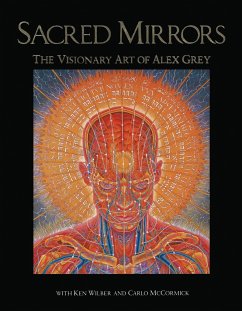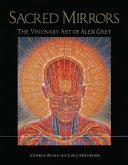This unique series of paintings takes the viewer on a graphic, visionary journey through the physical, metaphysical, and spiritual anatomy of the self. From anatomically correct rendering of the body systems, Grey moves to the spiritual/energetic systems with such images as "Universal Mind Lattice," envisioning the sacred and esoteric symbolism of the body and the forces that define its living field of energy.
Includes essays on the significance of Grey's work by Ken Wilber, the eminent transpersonal psychologist, and by the noted New York art critic, Carlo McCormick.
Includes essays on the significance of Grey's work by Ken Wilber, the eminent transpersonal psychologist, and by the noted New York art critic, Carlo McCormick.
"Mr. Grey's paintings, as detailed and anatomically accurate as medical illustrations, present man as an archetypal being struggling toward cosmic unity--Grey's vision of a flawed but perfectible mankind stands as an antidote to the cynicism and spiritual malaise prevalent in much contemporary art." New York Times








